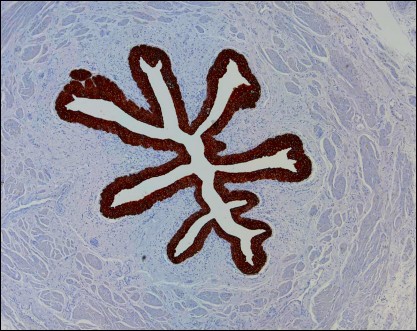In the grand theater of nature, the struggle for survival unfolds in myriad forms. One particularly captivating scenario is the interaction between microscopic organisms, specifically bacteria, and their surrounding fluid environments. As these diminutive entities navigate through currents of water or other fluids, they epitomize a remarkable dance of resilience and adaptation. This phenomenon is not merely a testament to their biological ingenuity but also serves as a metaphor for larger existential battles, echoing themes of persistence amidst adversity.
The microcosm of the bacterial realm is a battleground, where the stakes are as high as any epic conflict portrayed in larger scales of life. Bacteria, despite their minuscule dimensions, exhibit a profound capability to manipulate their surroundings. When faced with a flow, whether it be gentle or vigorous, their survival hinges on a multifaceted arsenal of strategies. These strategies—swimming, adhesion, and even biofilm formation—illustrate a narrative rich in complexity and innovation. Moreover, the fundamental principles governing these interactions resonate with themes inherent in the physics of fluid dynamics.
Central to understanding this competition is the concept of viscosity. The resistance of a fluid to deformation can dramatically impact a bacterium’s ability to navigate through its milieu. In low-viscosity environments, such as water, bacteria are afforded a degree of agility; they can propel themselves using a combination of flagellar motion and other locomotion methods. Conversely, in high-viscosity conditions, such as sludge or thickened media, the bacteria’s plight intensifies. Motility becomes a challenge, rendering them vulnerable to predation and reducing their ability to access nutrients.
The phenomenon of swimming in microbial organisms exemplifies the intricate balance between form and function. Bacteria possess flagella, whip-like appendages that orchestrate their movement. The motion of these flagella is reminiscent of the propulsion systems found in larger organisms, albeit executed on a minuscule scale. Each beat of a flagellum is a calculated strike against the impending current, and the speed of motion is modulated by the bacteria’s immediate environment. This finely tuned ballet of movement encapsulates not only a mechanical response but also a biological imperative—to thrive despite the odds. The bacteria transform fluid dynamics into a source of kinetic energy, showcasing an adaptive capacity that belies their simple morphology.
Furthermore, the implications of bacterial locomotion extend beyond mere survival; they intersect with issues of bioengineering and biotechnology. Understanding how bacteria maneuver through various flows can yield insights into the design of drug delivery systems, filtration processes, and microbial fuel cells. This brings forth a symbiosis between the biological and the engineering realms, fostering innovation that can lead to progressive applications in health and industry.
In the context of ecological systems, the interactions between bacteria and flow play a pivotal role in nutrient cycling and the dynamics of aquatic environments. Bacteria act as both scavengers and producers, contributing to the degradation of organic matter and the release of nutrients into the water column. Their movement through the water not only facilitates their own survival but also serves a greater purpose of sustaining ecosystems. In this light, the battle against flow becomes a collaborative effort, where bacteria engage with their environment, shaping and being shaped by the intricate networks of life.
The aesthetics of this struggle evoke a poetic resonance—an image of tiny warriors striving against invisible foes. In this narrative, one can draw parallels to themes of determination and resilience prevalent in the human experience. Just as a bacterium must forge ahead against a relentless current, so too must individuals face the challenges of life, often confronting forces that seem insurmountable. This metaphor transcends scientific observation, inviting contemplation on the broader philosophical implications of struggle and survival.
Moreover, the study of how microbes interact with dynamic environments prompts scientific inquiry into the adaptive mechanisms underpinning their resilience. Recent research endeavors seek to elucidate the genetic and biochemical pathways that enable bacteria to reconvene and regroup under flow constraints. Such investigations hinge on high-resolution imaging technology and computational fluid dynamics, allowing scientists to visualize bacterial behavior in real-time as they respond to varying hydrodynamic forces.
Another fascinating aspect of this microscopic battle is the phenomenon of biofilm formation. Under conducive conditions, bacteria can excrete extracellular polymeric substances (EPS) to create structured communities known as biofilms. These communities act as both a fortress and a solid ground for microbial inhabitants, providing protection against shear forces and environmental extremes. In this configuration, bacteria exhibit a unique form of tactical collaboration, enhancing their survival and nutrient acquisition in challenging fluid environments.
The interface between the microscopic and macroscopic worlds beckons a deeper understanding of how such battles shape ecological and evolutionary trajectories. The relentless pursuit of knowledge surrounding the dynamics of microbes in flow not only enriches the scientific lexicon but also underscores the significance of these seemingly inconsequential organisms in broader biological contexts.
In conclusion, the struggle of a bacterium against the current provides a captivating focal point through which we can explore the intersection of biology, physics, and philosophy. The strategies employed by these microorganisms to navigate complex fluid dynamics reveal a rich tapestry of resilience, adaptation, and collaboration that resonates with the fundamental human story. As we delve deeper into this microcosm, we uncover layers of complexity that challenge our perceptions of life and survival, reminding us that even in the smallest of entities lie narratives of profound significance.










